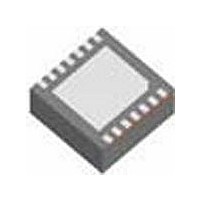LM4850LDX National Semiconductor, LM4850LDX Datasheet - Page 14

LM4850LDX
Manufacturer Part Number
LM4850LDX
Description
Manufacturer
National Semiconductor
Datasheet
1.LM4850LDX.pdf
(20 pages)
Specifications of LM4850LDX
Operational Class
Class-AB
Audio Amplifier Function
Headphone/Speaker
Total Harmonic Distortion
1@32Ohm@95mW%
Single Supply Voltage (typ)
3/5V
Dual Supply Voltage (typ)
Not RequiredV
Supply Current (max)
7@5VmA
Power Supply Requirement
Single
Rail/rail I/o Type
No
Single Supply Voltage (min)
2.4V
Single Supply Voltage (max)
5.5V
Dual Supply Voltage (min)
Not RequiredV
Dual Supply Voltage (max)
Not RequiredV
Operating Temp Range
-40C to 85C
Operating Temperature Classification
Industrial
Mounting
Surface Mount
Pin Count
14
Package Type
LLP
Lead Free Status / Rohs Status
Not Compliant
www.national.com
Application Information
extend to at least one−fifth the lower bandwidth limit and the
high frequency response must extend o at least five times
the upper bandwidth limit. The variation for both response
limits is 0.17dB, well within the
results in:
As stated in the External Components section, R
junction with C
capacitor’s value using Equation 9.
Use a 0.39µF capacitor, the closest standard value.
The high frequency pole is determined by the product of the
desired high frequency pole, f
A
150kHz which is much smaller than the LM4850 GBWP of
10MHz. This difference indicates that a designer can still use
the LM4850 at higher differential gains without bandwidth
limitations.
VD
. With A
C
I
VD
≥ 1 / ( 2π x 20kΩ x 20Hz) = 0.397µF
= 3 and f
I
create a highpass filter. Find the coupling
f
H
f
L
= 20kHz x 5 = 100kHz
= 100Hz / 5 = 20Hz
C
I
H
≥ 1 / (2πR
= 100kHz, the resulting GBWP =
H
±
, and the differential gain,
0.25dB desired limit. This
I
f
L
)
(Continued)
I
in con-
(9)
14
PCB LAYOUT AND SUPPLY REGULATION
CONSIDERATIONS FOR DRIVING 3Ω AND 4Ω LOADS
Power dissipated by a load is a function of the voltage swing
across the load and the load’s impedance. As load imped-
ance decreases, load dissipation becomes increasingly de-
pendant on the interconnect (PCB trace and wire) resistance
between the amplifier output pins and the load’s connec-
tions. Residual trace resistance causes a voltage drop,
which results in power dissipated in the trace and not in the
load as desired. For example, 0.1Ω trace resistance reduces
the output power dissipated by a 4Ω load from 2.0W to
1.95W. This problem of decreased load dissipation is exac-
erbated as load impedance decreases. Therefore, to main-
tain the highest load dissipation and widest output voltage
swing, PCB traces that connect the output pins to a load
must be as wide as possible.
Poor power supply regulation adversely affects maximum
output power. A poorly regulated supply’s output voltage
decreases with increasing load current. Reduced supply
voltage causes decreased headroom, output signal clipping,
and reduced output power. Even with tightly regulated sup-
plies, trace resistance creates the same effects as poor
supply regulation. Therefore, making the power supply
traces as wide as possible helps maintain full output voltage
swing.










